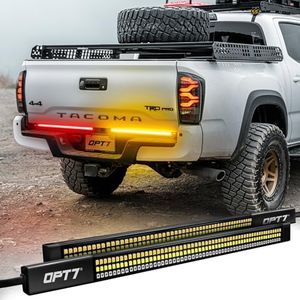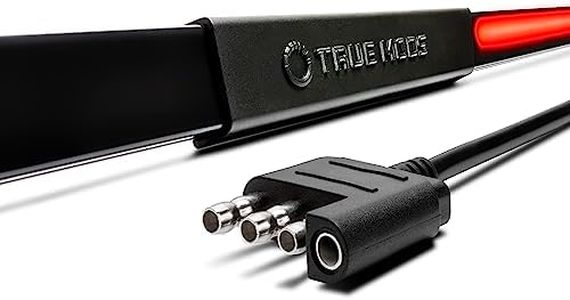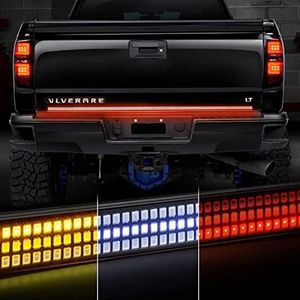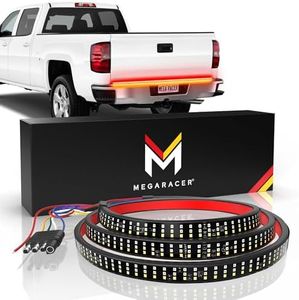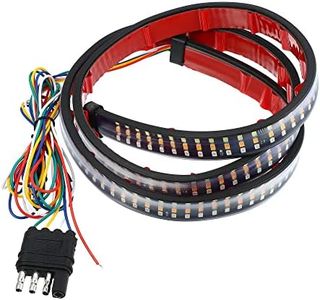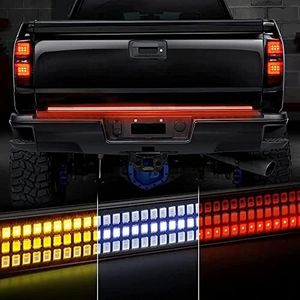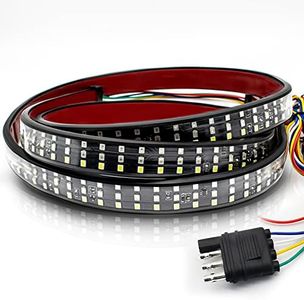We Use CookiesWe use cookies to enhance the security, performance,
functionality and for analytical and promotional activities. By continuing to browse this site you
are agreeing to our privacy policy
10 Best Tailgate Led Light Bar
From leading brands and best sellers available on the web.Buying Guide for the Best Tailgate Led Light Bar
When choosing a tailgate LED light bar for your vehicle, it's important to think about both style and function. A tailgate light bar not only enhances the appearance of your vehicle, but also improves safety by increasing visibility, especially at night or during poor weather. To find the best fit for your needs, it's important to understand the different specifications, what they mean, and how they relate to your vehicle and usage style.LengthLength refers to the measurement of the light bar from end to end, typically given in inches. This spec is important because your light bar needs to fit properly on your vehicle’s tailgate without overhang or gaps. Tailgate light bars commonly come in lengths ranging from about 48 to 60 inches. Smaller trucks and SUVs may require a shorter bar, while full-size pickups will often fit longer models. To choose the right length, measure the width of your tailgate area and look for a light bar that matches or is slightly shorter, ensuring it won’t interfere with your vehicle’s bodywork or tailgate mechanism.
Lighting FunctionsLighting functions describe what tasks the LED light bar can perform, such as running lights, brake lights, turn signals, and reverse lights. Some simple bars only provide an extra running light, while more advanced ones can integrate all brake, turn, and reverse light signals. If you want maximum visibility and extra safety features, especially for towing and night driving, choose a bar that syncs with all your vehicle's lighting signals. Consider your driving needs: if you often tow or drive in adverse conditions, multiple lighting functions can make a big difference.
Installation MethodThis specification addresses how the light bar attaches to your vehicle and how it connects to your vehicle's wiring. Many bars use automotive-grade adhesive tape for simple, tool-free installation, while others might require brackets or screws for a more secure fit. Wiring can range from simple plug-and-play connections to more involved hardwiring. If you want an easy installation without modifying your truck, look for adhesive mounting and plug-and-play systems. If you have experience or need a more permanent setup, hardwired options might suit you better.
Weatherproof RatingThe weatherproof or waterproof rating tells you how well the light bar can withstand exposure to rain, snow, dust, and road debris. This is usually shown as an IP (Ingress Protection) rating, like IP67 or IP68. A higher IP rating means better protection. If you live in an area with a lot of rain, snow, or off-road conditions, choose a light bar with a higher weatherproof rating to ensure durability and longer lifespan.
BrightnessBrightness for LED light bars is typically measured in lumens. The higher the lumen count, the brighter the light output. While brighter light bars improve visibility, excessively bright lights can be distracting or even illegal in some areas. Moderate lumen levels are usually sufficient for most situations, providing extra visibility without overwhelming other drivers. Consider your use: if most of your driving is at night or in dark areas, a brighter bar makes sense; if it’s mostly city or daytime driving, standard brightness may be enough.
Color and Light PatternThis refers to both the color of the LEDs and the arrangement of the light they produce. Common options are red for brakes and running lights, amber for turn signals, and white for reverse lights. Some bars offer sequential turn signals or different pattern options. The color and pattern can affect both appearance and compliance with traffic laws. For most users, sticking with standard red and amber signals ensures legal compliance, while special patterns can add a custom look if allowed by your local regulations.

